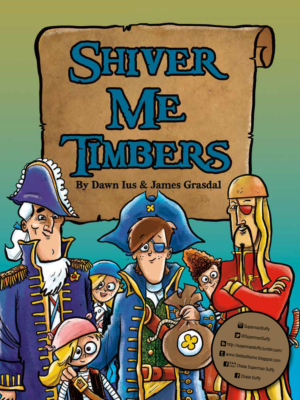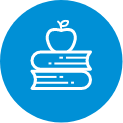
Grade 5 Learning Objectives for “Shiver Me Timbers”
Jump to Subject

English Language Arts
General Learning Objective
1. Students will listen, speak, read, write, view and represent to explore thoughts, ideas, feelings and experiences.
Specific Learning Objectives
1.1 Discover and Explore
Express ideas and develop understanding
- Use appropriate prior knowledge and experiences to make sense of new ideas and information
- Read, write, represent and talk to explore personal understandings of new ideas and information
1.2 Clarify and Extend
Combine ideas
- Use talk, notes, personal writing and representing to explore relationships among own ideas and experiences, those of others and those encountered in oral, print and other media texts
General Learning Objective
2. Students will listen, speak, read, write, view and represent to comprehend and respond personally and critically to oral, print and other media texts.
Specific Learning Objectives
2.1 Use Strategies and Cues
Use comprehension strategies
- Comprehend new ideas and information by responding personally, taking notes and discussing ideas with others
- Use the meanings of familiar words to predict the meanings of unfamiliar words in context
- Monitor understanding by comparing personal knowledge and experiences with information on the same topic from a variety of sources
Use textual cues
- Use text features, such as maps, diagrams, special fonts and graphics, that highlight important concepts to enhance understanding of ideas and information
Use phonics and structural analysis
- Identify and know by sight the meaning of high frequency prefixes and suffixes to read unfamiliar, multisyllable words in context
- Integrate knowledge of phonics, sight vocabulary and structural analysis with knowledge of language and context clues to read unfamiliar words in context
2.2. Respond to Texts
Experience various texts
- Express points of view about oral, print and other media texts
- Describe and discuss new places, times, characters and events encountered in oral, print and other media texts
- Write or represent the meaning of texts in different forms
Construct meaning from texts
- Compare characters and situations portrayed in oral, print and other media texts to those encountered in the classroom and community
- Describe characters’ qualities based on what they say and do and how they are described in oral, print and other media texts
- Describe and discuss the influence of setting on the characters and events
- Support own interpretations of oral, print and other media texts, using evidence from personal experiences and the texts
- Retell or represent stories from the points of view of different characters
2.3 Understand Forms, Elements and Techniques
Understand forms and genres
- Identify and discuss similarities and differences among a variety of forms of oral, print and other media texts
Understand techniques and elements
- Identify the main problem or conflict in oral, print and other media texts, and explain how it is resolved
- Identify and discuss the main character’s point of view and motivation
- Identify sections or elements in print or other media texts, such as shots in films or sections in magazines
2.4 Create Original Text
Generate ideas
- Use texts from listening, reading and viewing experiences as models for producing own oral, print and other media texts
Elaborate on the expression of ideas
- Experiment with modeled forms of oral, print and other media texts to suit particular audiences and purposes
Structure texts
- Use structures encountered in texts to organize and present ideas in own oral, print and other media texts
General Learning Objective
3. Students will listen, speak, read, write, view and represent to manage ideas and information.
Specific Learning Objectives
3.1 Plan and Focus
Focus attention
- Summarize important ideas in oral, print and other media texts and express opinions about them
General Learning Objective
5. Students will listen, speak, read, write, view and represent to respect, support and collaborate with others.
Specific Learning Objectives
5.1 Respect Others and Strengthen Community
Appreciate diversity
- Compare own and others’ responses to ideas and experiences related to oral, print and other media texts
Relate texts to culture
- Identify and discuss how qualities, such as courage, ambition and loyalty, are portrayed in oral, print and other media texts from diverse cultures and communities

Social Studies
Topic: 5.1 Physical Geography of Canada
General Learning Objective
Students will demonstrate an understanding and appreciation of how the physical geography and natural resources of Canada affect the quality of life of all Canadians.
Specific Learning Objectives
5.1.1
Value Canada’s physical geography and natural environment:
5.1.2
Examine, critically, the physical geography of Canada by exploring and reflecting upon the
following questions and issues:
5.1.3
Analyze how people in Canada interact with the environment by exploring and reflecting
upon the following questions and issues:
Topic: Dimensions of Thinking
General Learning Objective
Skills and Processes
Specific Learning Objectives
5.S.1
Develop skills of critical thinking and creative thinking:
5.S.3
Develop skills of geographic thinking: